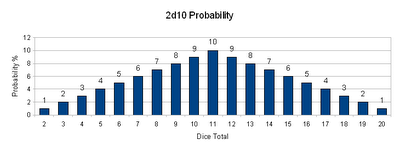Name: Udo
Race: Halfling
| WS | BS | S | T | Ag | Int | WP | Fel | |
| Original | 25 | 42 | 25 | 16 | 38 | 27 | 32 | 48 |
| Adjusted | 21 | 37 | ||||||
| Advance | +5% | +10% | +5% | +5% | +10% | |||
| Advance Used | +5% | |||||||
| A | W | SB | TB | M | Mag | IP | FP | |
| Original | 1 | 10 | 2 | 1 | 4 | 0 | 0 | 2 |
| Adjusted | 11 | 2 | ||||||
| Advance | +2 | |||||||
| Advance Used |
Applying Shallya's mercy to his Toughness gives him an average score of 21, this will also increase his TB to 2 on the secondard characteristics.
Skills: Based on race in WFRP
Academic Knowledge(Geneology/Heraldry), Common Knowledge(Halflings), Gossip, Speak Language(Halfling), Speak Language(Reikspiel), Trade (Cook)
Career Skills:Animal Care, Charm, Gossip, Haggle, Perception, Search, Speak Language (Brettonian) - so his final skills end up with Gossip (+10%)
Talents: Mostly racial features in WFRP
Night Vision, Resistance to Chaos, Specialist Weapon Group(Sling)
Randomly rolled: Savvy +5% to Int
Career Talents: Dealmaker, Flee!, Seasoned Traveller, Hardy (+1 wound) - a better choice than Suave as a +5 to fellowship would reinforce an already very good characteristic
Starting Career: I rolled 10 for a Camp Follower and 25 for a Grave Robber and selected Camp Follower with Udo being a cook following the armies to look for plunder. As a career this concentrates on the social and intellectual development of a character meaning that Udo will generally talk rather than fight and if he has to fight it'd be at a distance with his sling.
Physical Features (as there are tables for them I'm rolling them):
Height: base 3' 4" roll 8 so add 8 inches to get 4 feet 0 inches - a tall halfling
Weight: percentile roll - 88 on the table gets me 120 pounds so Udo is big and tall in halfling terms - able to look a dwarf in the eye!
Hair colour: Eye colour:
Distinguishing Marks: only one roll I've decided - Missing nail
Siblings: 5
Star Sign: The Big Cross Age: 26
Birthplace: The Moot Name: Udo
Purse: 12GC - 4GC for sling gives 8GC
Trappings: Clothes (worn shirt, breeches, boots and cloak), Pack containing Blanket, Wooden tankard, Wooden utensils, Trade Tools(cook), Tent, Pouch, Cleaver (Handweapon), Dagger, Purse
Weapons:
Handweapon (Cleaver) Damage SB(2)
Dagger Damage SB-3(-1) only the damage die will actually give any damage
Sling Damage 3
For purchase one thing stands out: a sling as his high ballistic skill and specialist weapon group talent mean he's going to be a lot more effective with that than going into melee with a sword. I made his handweapon a cleaver as being appropriate for a cook.

